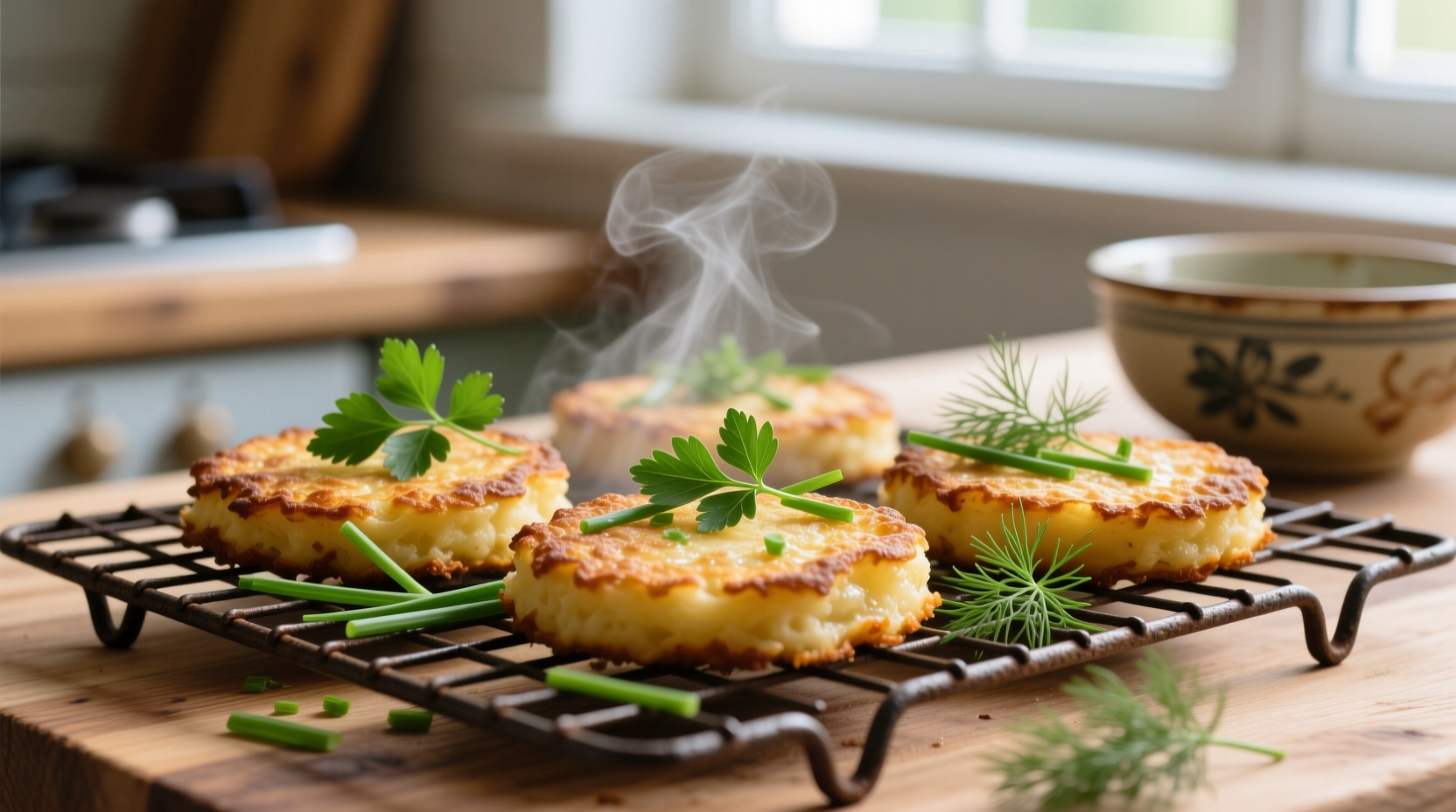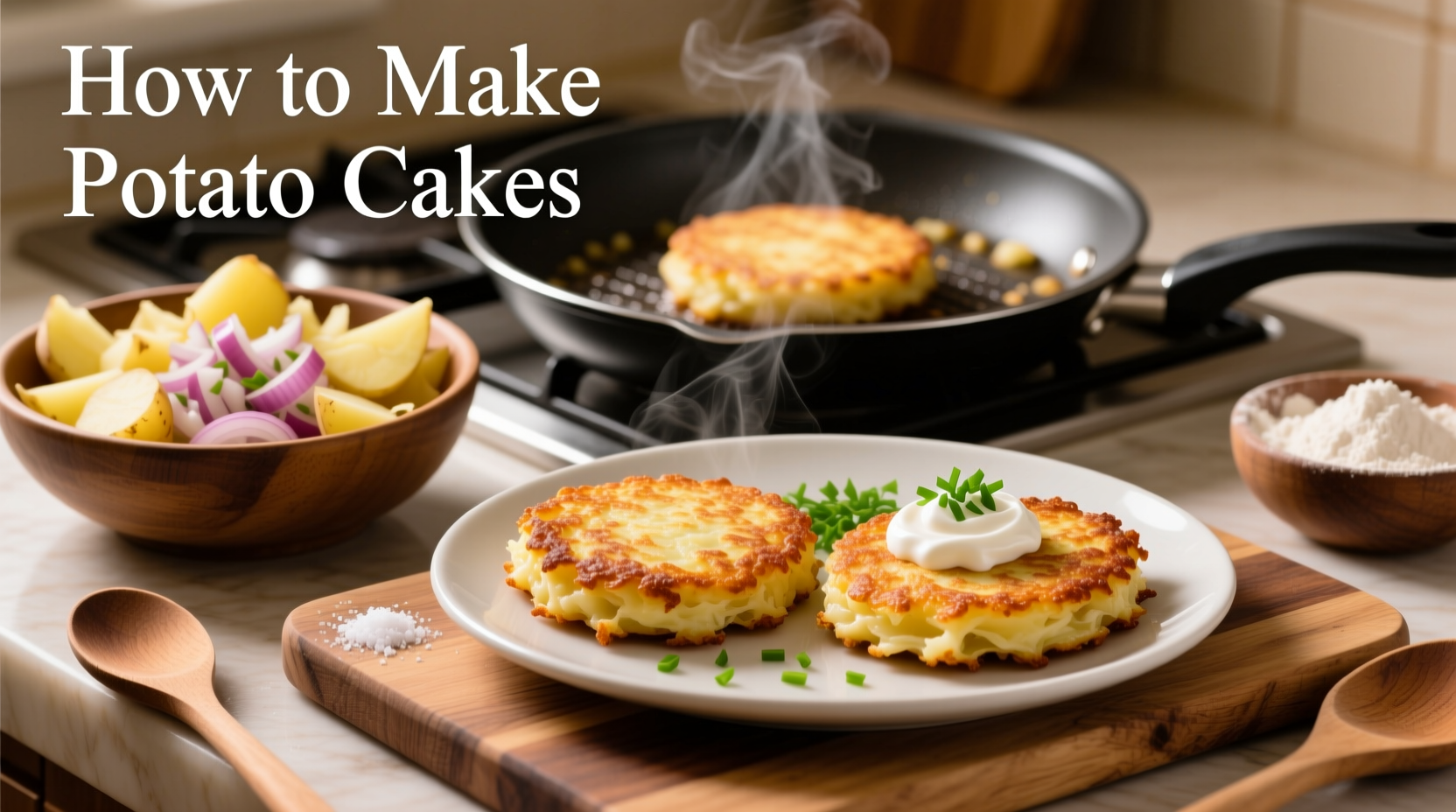Learn how to make crispy, golden potato cakes with this detailed recipe. You'll get step-by-step instructions, ingredient measurements, cooking techniques for perfect crispness, and professional tips to avoid common mistakes. This guide delivers everything you need for restaurant-quality potato cakes at home.
Why Potato Cakes Deserve a Spot in Your Cooking Repertoire
Nothing beats the satisfying crunch of perfectly cooked potato cakes. These versatile delights work equally well as a hearty breakfast side, elegant brunch feature, or comforting dinner accompaniment. With roots tracing back to European farmhouse cooking, potato cakes have evolved into a global favorite with regional variations from latkes to hash browns. The secret to exceptional potato cakes lies in proper technique rather than complex ingredients.
Essential Ingredients for Perfect Potato Cakes
The quality of your ingredients directly impacts the final result. Here's what you need for six servings of crispy, flavorful potato cakes:
| Ingredient | Measurement | Why It Matters |
|---|---|---|
| Russet potatoes | 2 lbs (900g) | High starch content creates ideal texture |
| Yellow onion | 1 medium | Adds flavor without overpowering potatoes |
| Eggs | 2 large | Binds ingredients while adding richness |
| All-purpose flour | 3 tablespoons | Helps achieve crisp exterior |
| Salt | 1½ teaspoons | Enhances flavor and draws out moisture |
| Black pepper | ½ teaspoon | Adds subtle warmth |
| Vegetable oil | ¼ cup for frying | High smoke point ensures proper browning |
Potato Selection: The Foundation of Great Potato Cakes
Not all potatoes work equally well for potato cakes. Understanding potato varieties prevents disappointing results:
| Potato Type | Starch Content | Best For Potato Cakes? | Why |
|---|---|---|---|
| Russet | High | ✓ Ideal | Creates crisp exterior with fluffy interior |
| Yukon Gold | Medium | ✓ Good | Buttery flavor but slightly less crisp |
| Red Potatoes | Low | ✗ Poor | Waxy texture prevents proper browning |
| Sweet Potatoes | Low | ✓ For variations | Requires recipe adjustments for best results |
Equipment Checklist for Success
Gather these tools before starting to ensure smooth preparation:
- Box grater or food processor with grating attachment
- Clean kitchen towel or cheesecloth
- Large mixing bowl
- Non-stick or cast iron skillet (10-12 inches)
- Spatula with thin edge
- Wire cooling rack
Step-by-Step Preparation Process
1. Potato Preparation: Removing Excess Moisture
Moisture control determines whether your potato cakes crisp up or turn soggy. Follow these critical steps:
- Peel potatoes and grate using the large holes of your box grater
- Place grated potatoes in a clean kitchen towel and squeeze firmly over the sink
- Continue squeezing until no more liquid emerges (this takes 1-2 minutes of firm pressure)
- Transfer squeezed potatoes to a large bowl
According to the USDA Food Safety and Inspection Service, properly draining potatoes not only improves texture but also ensures even cooking temperatures that prevent food safety concerns.
2. Building the Perfect Batter
Add these ingredients to your drained potatoes:
- Finely grated onion (squeeze out excess moisture)
- Eggs, beaten
- Flour, salt, and pepper
Mix gently until just combined. Overmixing breaks down the potato structure, leading to dense cakes. Let the mixture rest for 10 minutes to allow the flour to absorb any remaining moisture.
3. Cooking Technique: Achieving Golden Perfection
Proper heat management separates good potato cakes from great ones:
- Heat ¼ cup vegetable oil in your skillet over medium-high heat (350°F/175°C)
- Test heat by dropping a small amount of batter—it should sizzle immediately
- Form ⅓ cup portions into ½-inch thick patties
- Carefully place patties in hot oil, leaving space between them
- Cook 4-5 minutes per side until deeply golden brown
- Drain on wire rack (not paper towels) to maintain crispness
Professional chefs consistently emphasize that maintaining consistent oil temperature is crucial. As noted by the Culinary Institute of America, dropping multiple cakes into oil simultaneously lowers the temperature, causing absorption of excess oil and preventing proper browning.
Avoid These Common Potato Cake Mistakes
Even experienced cooks make these preventable errors:
Using the Wrong Potato Variety
Waxy potatoes like red or new potatoes contain less starch, resulting in cakes that won't crisp properly. Stick with high-starch varieties like Russets for best results.
Skipping the Moisture Removal Step
Waterlogged potatoes create steam during cooking rather than browning. Proper squeezing is non-negotiable for crispy results.
Cooking at Too Low Temperature
Insufficient heat causes cakes to absorb oil rather than fry. Use a thermometer to verify oil temperature—350°F (175°C) is ideal.
Crowding the Pan
Overcrowding lowers oil temperature and prevents proper air circulation. Cook in batches if necessary.
Serving Suggestions and Creative Variations
While classic potato cakes shine with simple accompaniments, these variations add exciting twists:
Traditional Pairings
- Applesauce (classic Eastern European pairing)
- Sour cream with chives
- Smoked salmon and dill
Flavor Variations
- Herb-infused: Add 2 tablespoons chopped fresh dill or parsley
- Spicy: Mix in 1 diced jalapeño and ½ teaspoon smoked paprika
- Cheesy: Fold in ½ cup shredded sharp cheddar before frying
Storage and Reheating for Maximum Crispness
Proper storage maintains quality for later enjoyment:
- Refrigeration: Store cooled cakes in airtight container for up to 3 days
- Freezing: Place between parchment paper in freezer bag for up to 2 months
- Reheating: Oven method preserves crispness best—375°F (190°C) for 10-15 minutes
Avoid microwaving, which creates a soggy texture. The USDA Food Safety website recommends reheating cooked foods to an internal temperature of 165°F (74°C) to ensure food safety.

Mastering Potato Cake Timing: The Critical Window
Understanding the cooking timeline prevents under or overcooking:
| Stage | Time | Visual Cues | Action Required |
|---|---|---|---|
| Oil heating | 3-5 minutes | Shimmering appearance | Test with batter drop |
| First side cooking | 4-5 minutes | Deep golden edges | Listen for consistent sizzle |
| Flipping | Instant | Brown crust forms | Use thin spatula for clean flip |
| Second side cooking | 3-4 minutes | Uniform golden color | Check internal temperature (165°F) |











 浙公网安备
33010002000092号
浙公网安备
33010002000092号 浙B2-20120091-4
浙B2-20120091-4